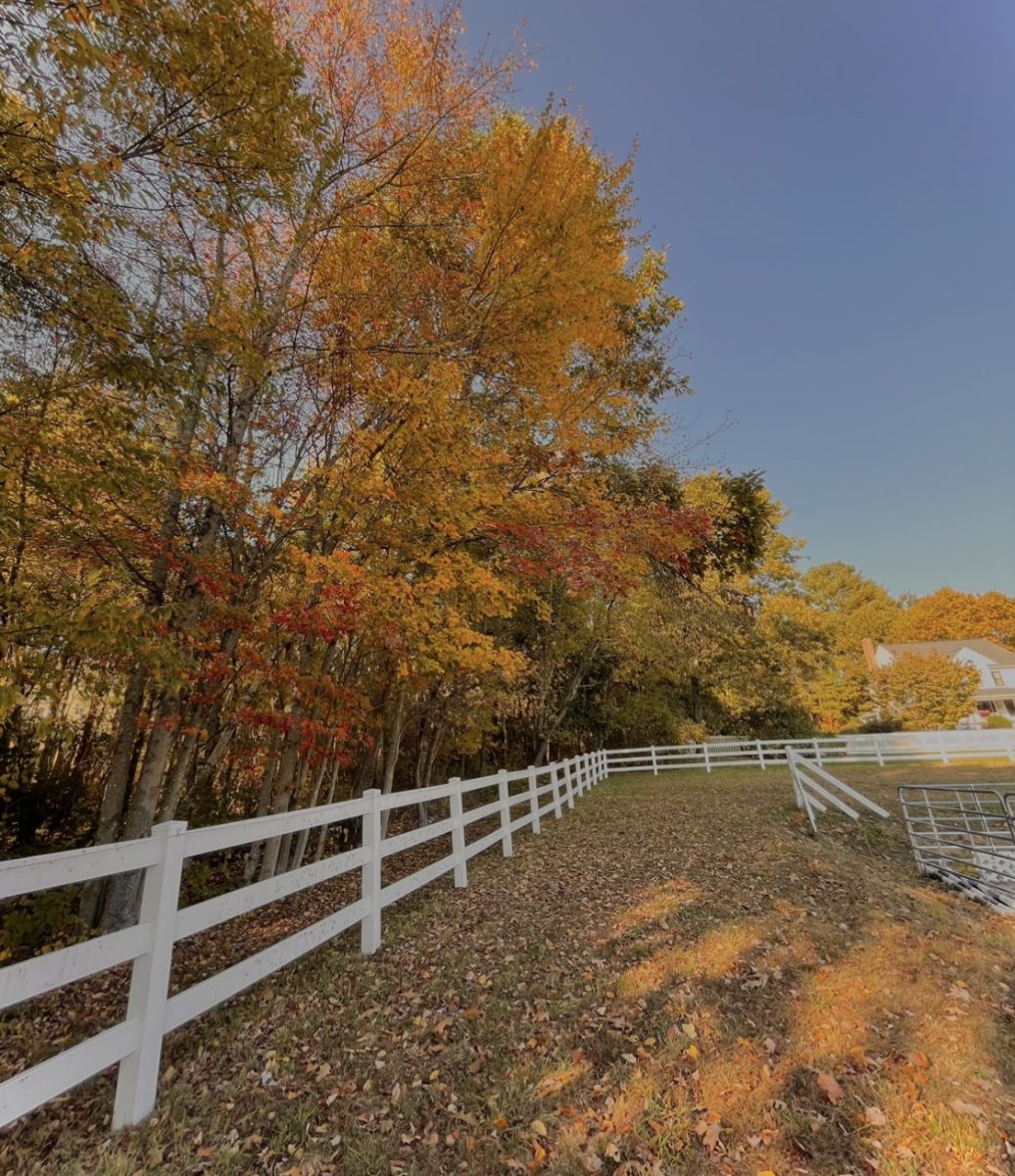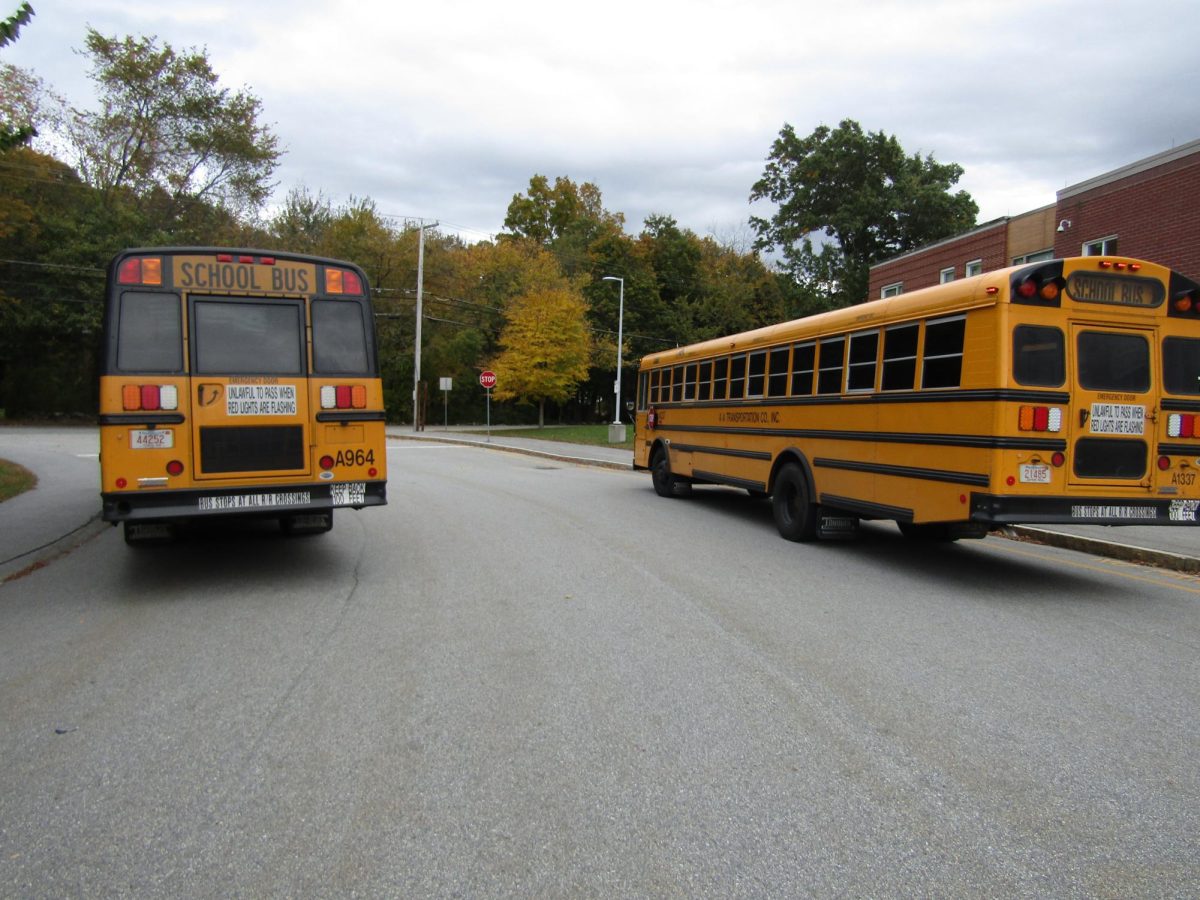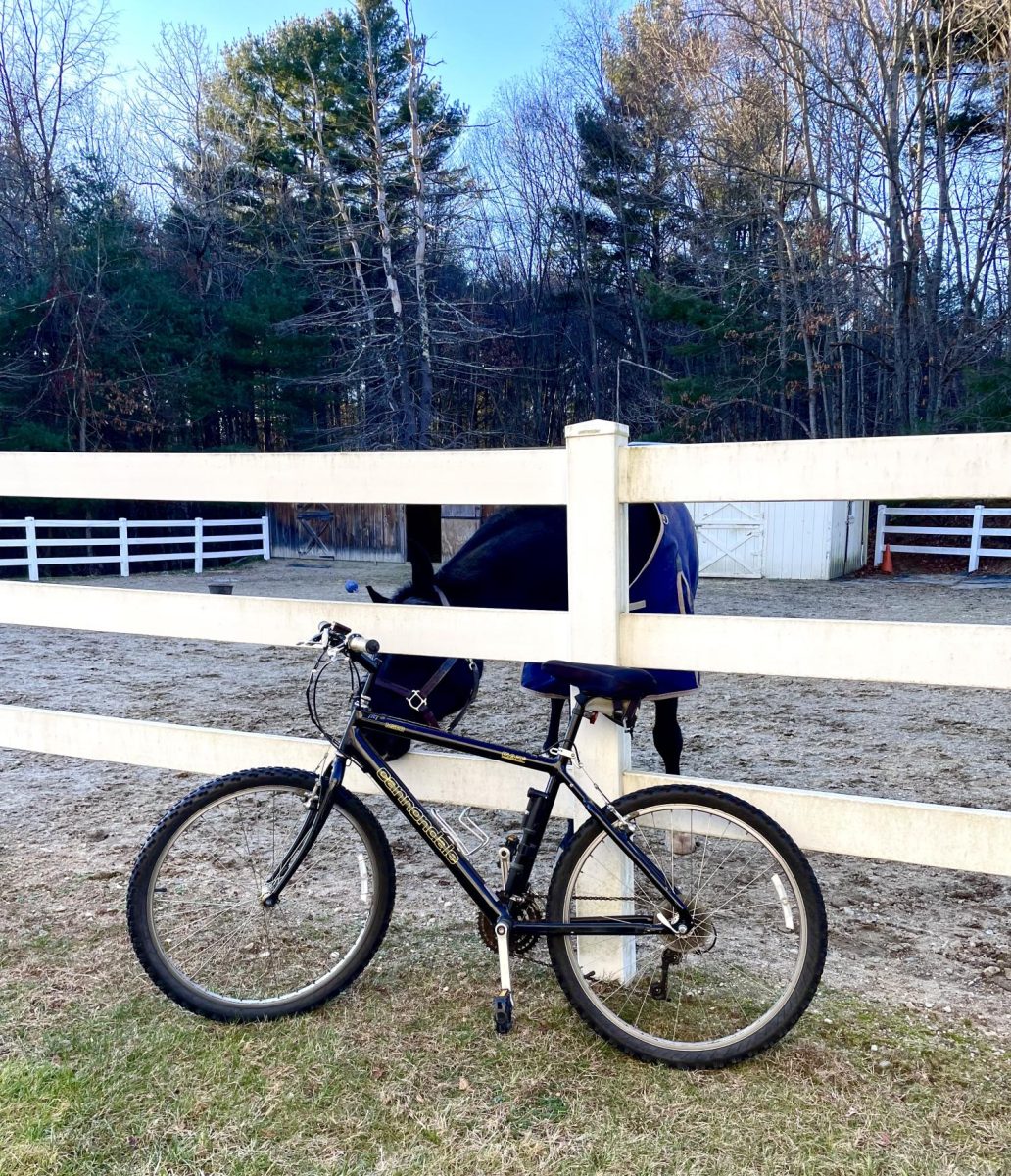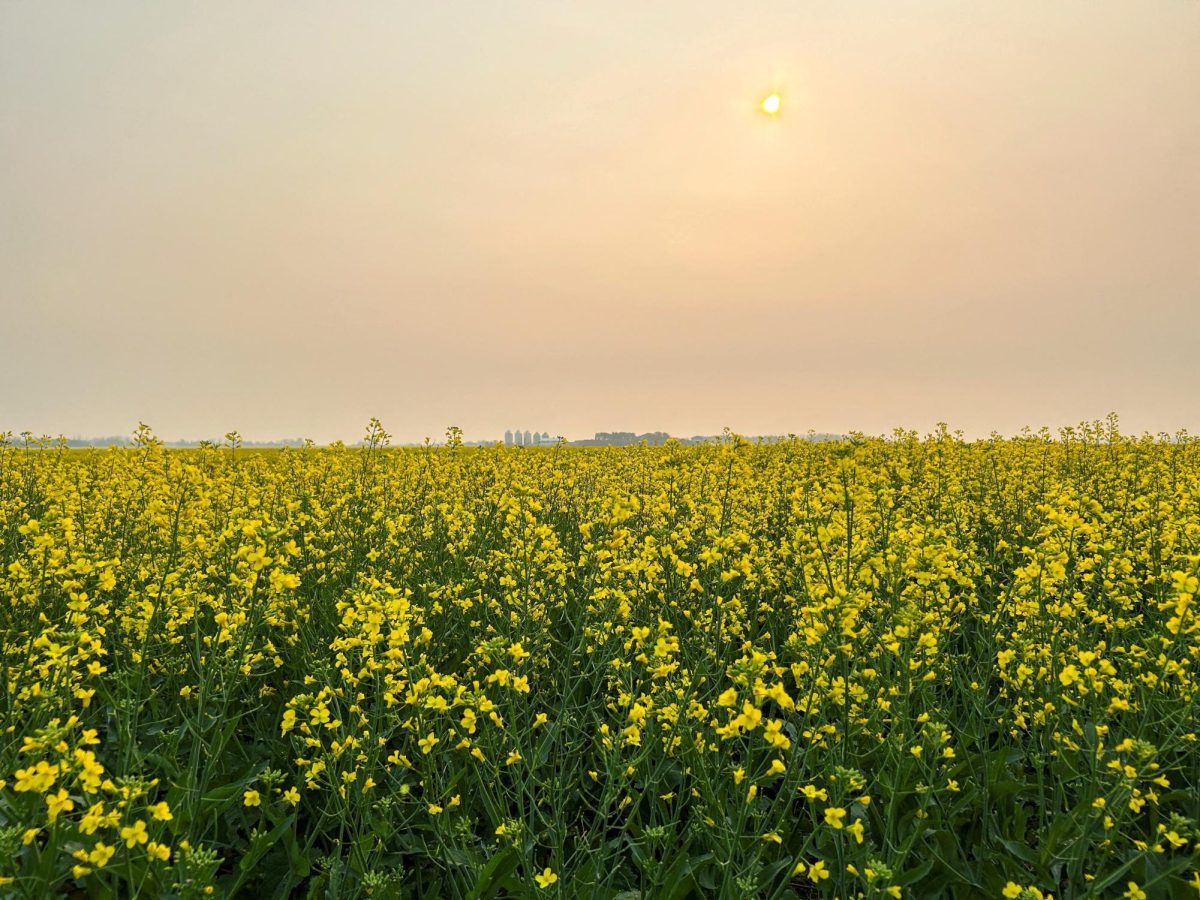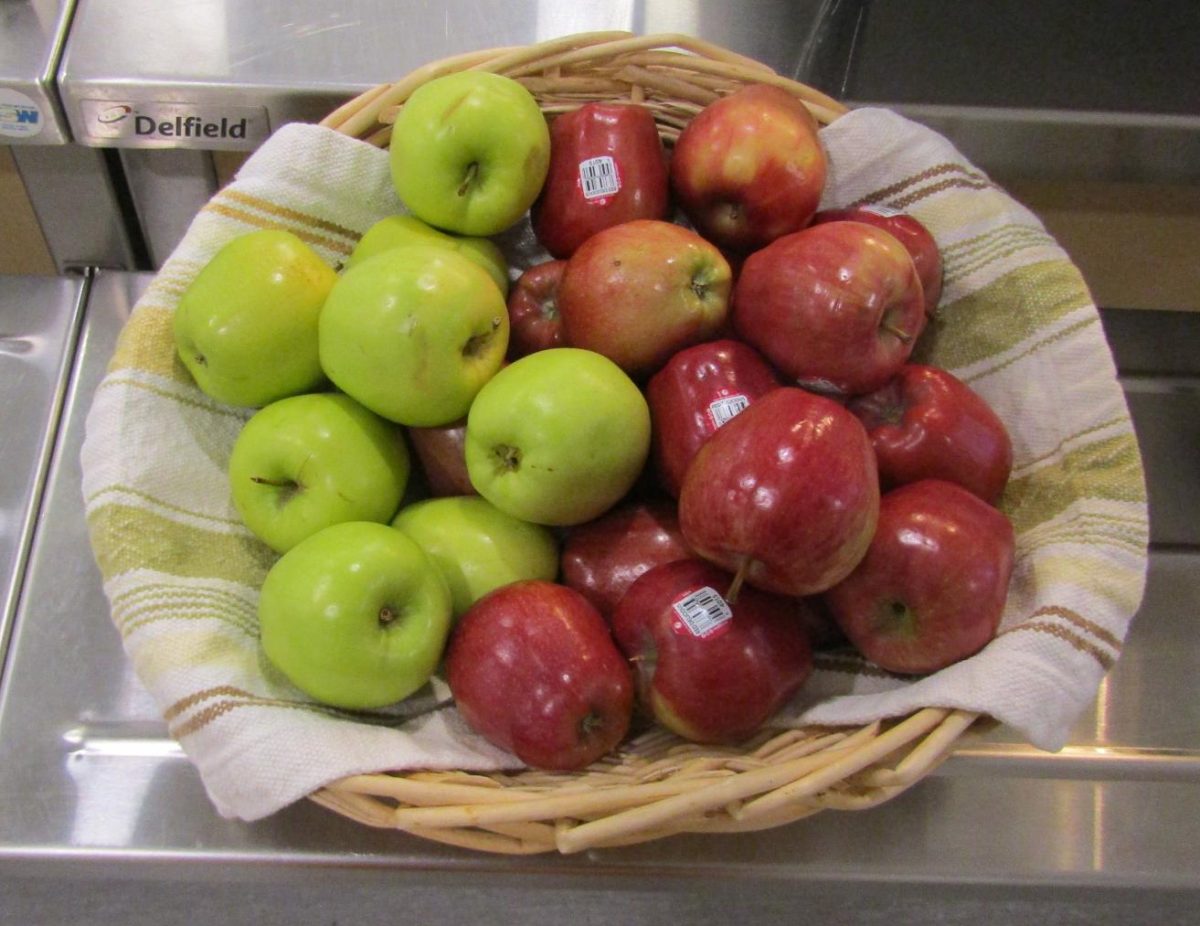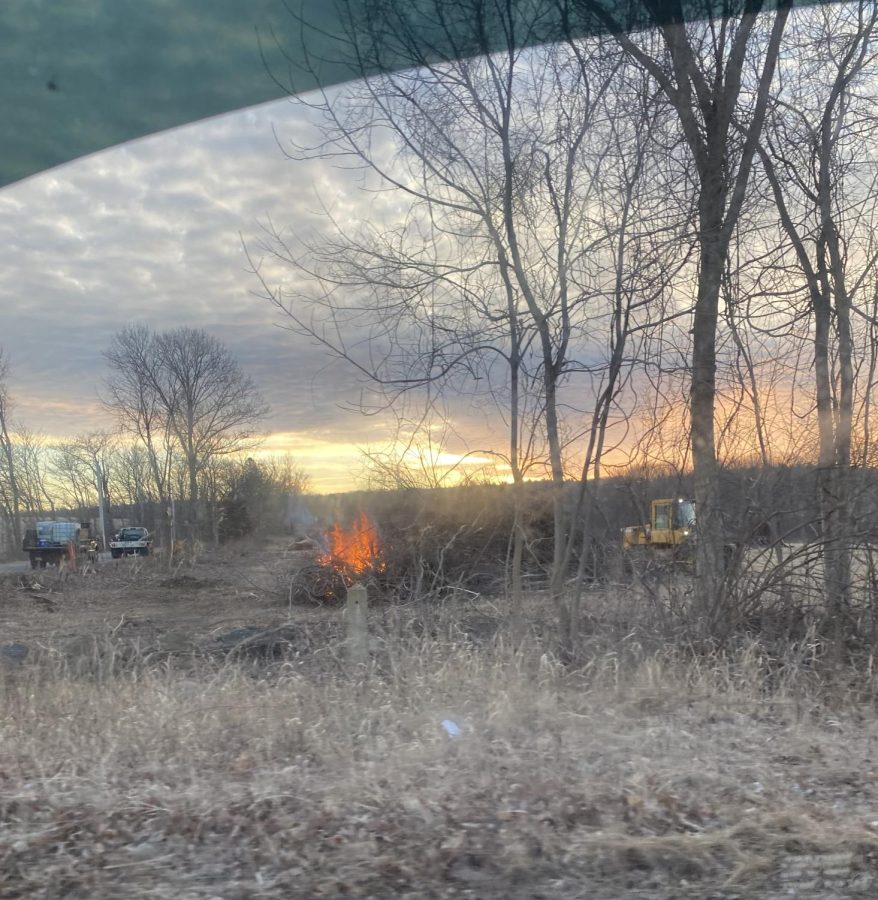Human Needs Are Taking Over
Is what we want really important?
Brush burning at Shaw´s farm after excavation of many trees (Alyssa Chouinard)
March 25, 2023
Since I was six years old, my father told me about a hill that he used to go sledding at when he was younger. At the time he told me this, the hill still stood high and mighty; now, there´s just about nothing left.
So what is happening to all of this land that we used to explore as kids?
Looking into my father’s favorite sledding hill, it turns out that the hill is owned by the company Pyne Sand and Stone which is a company that sells different types of materials ranging from concrete sand to pond fill.
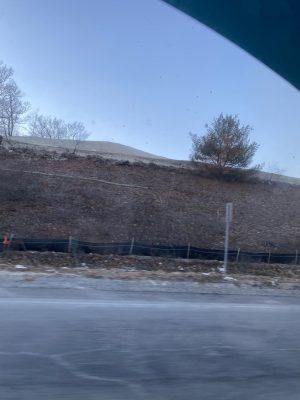
Getting straight to the point, the once high and mighty hill is actually a sand pit that is being demolished. This dirt coming from it is being sold to civilians for their needs.
Why are we taking resources from our area to help out others? Obviously we would have to get these supplies from somewhere but why does it have to be our small towns? We are using more and more natural resources, and this has come at a cost.
Human pressure on nature has soared immensely since the 1970s. If we lose large portions of the natural world, human quality of life will be severely reduced and the lives of future generations will be threatened unless effective action is taken. Over the last 50 years, nature’s capacity to support us has plummeted.
Since the 1970s, Earth’s population has doubled, and consumption has increased by 45%. The world is managed in a way that maximizes the flow of material from nature to meet rising human demands for resources like food, energy and timber.
Deforestation is the number one change that I have witnessed in the past few years. When we see a new plot of land dug up, curiosity instantly strikes us all so we continue to drive by until the foundation is set up.
Not surprisingly, it´s a new house going in.
In the past two years, I have seen twelve brand new houses constructed on plots of land that was filled with wildlife.
Now driving through Douglas, fairly close to the hill that used to be, I´ve seen an increase of construction in that area. Might as well make it 13+ brand new houses being built.
The demand for new housing increases every year, and developers constantly look for new plots of land to turn into new neighborhoods. If there is a new housing development in your area, or you are thinking of buying a new build home, you should be aware of the impact it can have on the local as well as global environment.
Many forests are protected by law and are public land, but our land is littered with small woodlands that often come under threat from the urban creep of new housing developments. When there is a new home being developed, you have to take into consideration all the laws and regulations that house builders, as well as homeowners, must follow when developing a home in order to protect the trees on the land and combat deforestation.
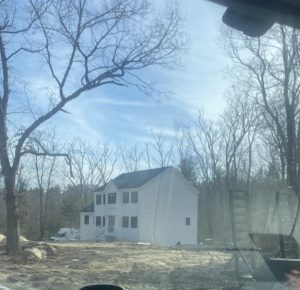
As a result, humans have directly altered at least 70% of Earth’s land, mainly for growing plants and keeping animals.
Many people don’t realize that these activities increase deforestation, degradation of land, loss of biodiversity and pollution, and have the biggest impacts on land and freshwater ecosystems.
Recent studies have indicated that humanity has ravaged all but three percent of the Earth‘s land. With this being said, 97 percent of the Earth’s ecosystem is no longer ecologically intact.
The expansion of human population and the requirements of our growing human family place outrageous demands on our environment. Through human intervention, we have altered our ecosystem forever. However, though some of these changes may be negative, humans also have the power to correct our mistakes and change our environment for the better.














